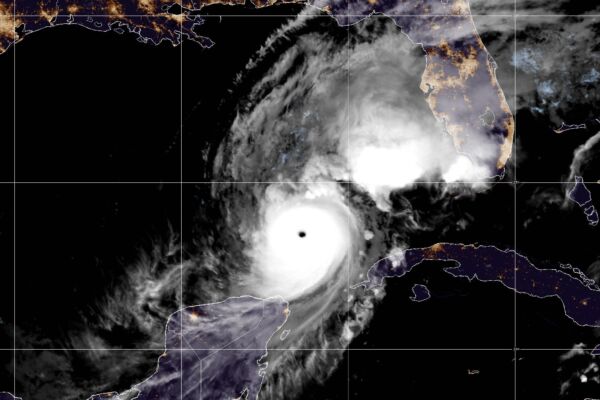On Tuesday, October 8th, Hurricane Milton, a category 5 storm, hit the Gulf Coast of Florida. US officials ordered the mandatory evacuation of over 1 million people, leading to traffic jams and a surge in fuel demand. Market monitoring agencies estimate that 17.4% of gas stations in Florida are facing fuel shortages.
Meteorologists predict that Milton will make landfall on Wednesday night to early Thursday, posing a threat to the densely populated western coast of Florida.
The last direct hit by a hurricane in Tampa Bay, Florida was in 1921. However, over a hundred years ago, the bay was still a relatively undeveloped area. Today, over 3 million people call this area home.
Mayor Jane Castor of Tampa warned people not to ignore evacuation orders and emphasized that Hurricane Helen is a wake-up call.
Castor stated, “Choosing to stay in these evacuation areas will cost lives.”
According to the US National Hurricane Center, as of 10:00 PM Eastern Time, Hurricane Milton has sustained maximum wind speeds of 160 miles per hour. The center of the storm is located 390 miles southwest of Tampa, moving northeast at 12 miles per hour.
The center indicates that compared to three hours prior, the storm’s forward speed has slightly increased. The eye of the storm is expected to maintain its current intensity and reach the Gulf Coast of Florida in approximately 24 hours. Milton is anticipated to be an “extremely dangerous large hurricane” upon landfall.
“When Milton’s center moves over Florida, the wind field is expected to significantly expand,” the center predicts. “Destructive strong winds, life-threatening storm surge, and heavy rainfall will extend beyond the forecast range.”
“Milton has the potential to be one of the most destructive hurricanes in central-west Florida history.” The center warns that evacuation and other preparedness efforts should be completed by tonight.
Ryan Sweet, the Chief US economist at Oxford Economics, stated in an article on Tuesday that about 2.8% of the US Gross Domestic Product (GDP) is within Milton’s direct impact zone.
Airlines, energy companies, and theme parks have begun to halt operations in Florida to mitigate the impact of the hurricane.
Governor Ron DeSantis mentioned that 5,000 National Guard members have been deployed, with an additional 3,000 ready to respond to storm aftermath.
US President Joe Biden postponed his overseas trip to oversee storm response efforts. He urged those under evacuation orders to leave immediately, stating that this is a matter of life and death.
Over a dozen coastal counties have issued mandatory evacuation orders.
Cars lined up outside gas stations waiting for fuel, only to find some stations are already out of gas. According to data from the market monitoring agency GasBuddy, as of 6:30 PM on Tuesday, out of 7,912 gas stations in Florida, approximately 17.4% are out of fuel, equivalent to nearly 1,380 stations being depleted.
Individuals planning to stay put are also trying to stock up on fuel to power generators during potential prolonged power outages.
DeSantis mentioned that state police will protect fuel delivery trucks at gas stations.
Mass evacuations have also led to traffic congestion. 38-year-old musician Mark Feinman told Reuters that it took him 13 hours and covered 500 miles to drive his family from St. Petersburg to Pensacola.
He mentioned that some drivers, in a rush to get to their destination, were speeding through breakdown lanes and grassy medians, resulting in traffic accidents.

